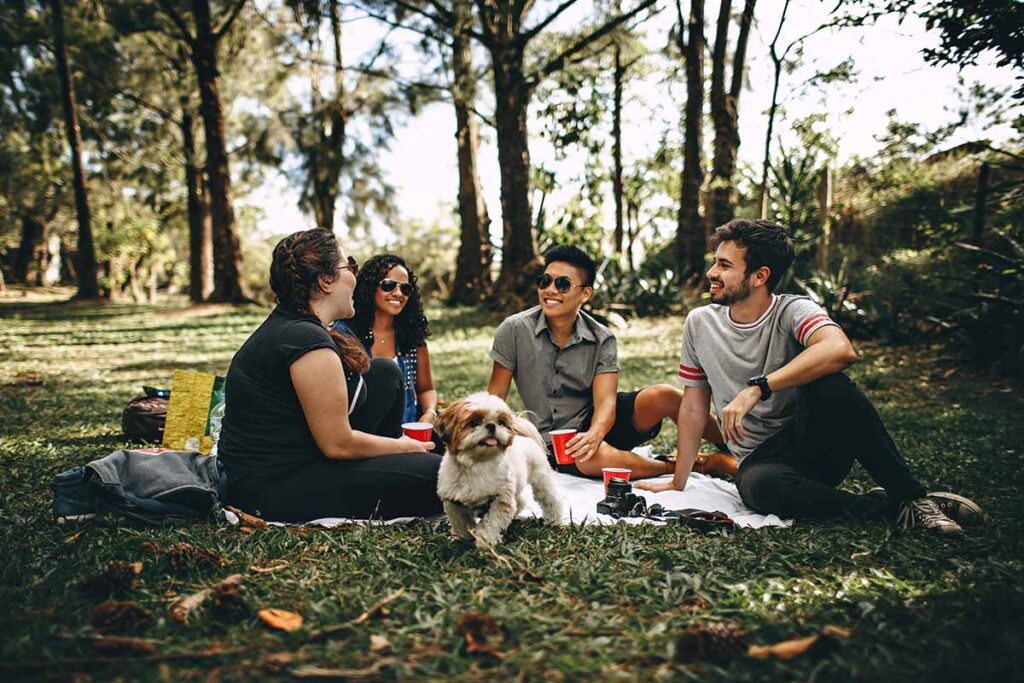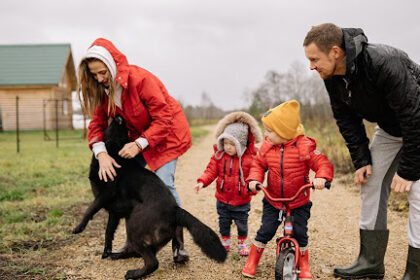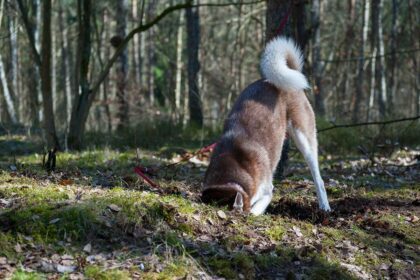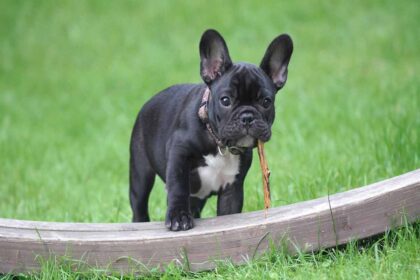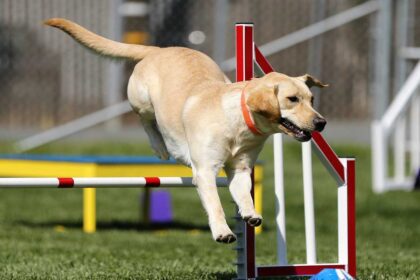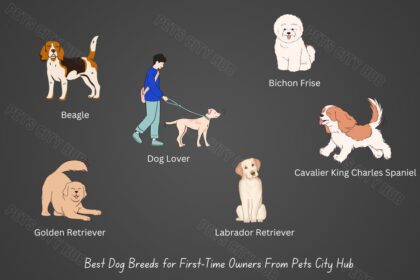Do you know, there are 5 essential training you must give your dog? Socialization is amongst one of the 5 essential training. A well-socialized dog gives peace of mind to the owner.
Besides, socialization training is also supportive for their safety. No, I am not exaggerating about the benefit of socialization training. Take 10 minutes and a cup of coffee in hand to find out why socialization training is crucial for your furry friend and how to socialize it.
What is socialization? Why should you socialize your dog?
Dog socialization means helping your dog to gain positive experiences with other animals, humans, new sights, new sounds, and new smells.
The goal of dog socialization is to develop a comfortable, relaxed, and well-behaved dog with other humans, dogs, and children.
Besides, a well-socialized dog can handle new experiences easily without being fearful or aggressive.
Moreover, a properly socialized dog can provide a sense of relaxation to the owner in various settings, such as in a relative’s house, leash walks, and in dog parks, knowing that their furry friend is safe around other children, dogs, and humans.
So, if you want a well-mannered and experienced furry friend, you should provide social training to your dog.
The best period to give socialization training to a dog
The Golden Periods for Socialize your Pups are between 3 to 16 weeks of age. During those periods, they are curious to explore their surroundings and generally, they haven’t developed any fear or bad experiences toward anything.
Consequently, parents like you can give your loved pup socialization training easily in that whole time.
Whereas, after 20 weeks, a dog typically becomes afraid or suspicious of any unfamiliar things. So, it becomes difficult to socialize an older dog.
But don’t be upset if your dog is older than 20 weeks and it is not socialized. You can socialize your older dog with consistency and bit more patience.
No matter which age your furry friend is, you can follow the below steps to socialize your dog.
Dog socialization step
Now come to the main point. How to socialize your dog? I have done research based on reliable resources and compiled some basic but important steps about how to socialize your loved dog. One by one let’s unveil those steps.
Positive reinforcement: Before socializing your dog, you should first understand what the positive reinforcement technique is.
In simple words, Positive reinforcement means rewarding dogs with treats or praise (or something they like) when they behave according to the trainer’s desired behaviors or follow commands.
Besides, avoid punishment when they do not understand what the trainer wants from them.
Now, when you provide socialization training to your dog, use the positive reinforcement technique. Don’t ever punish your dog for any undesirable temperament while socializing your dog. Because it will make socialization training frightening for it.
Remember, socialization training means helping your dog to gain positive experiences.
Instead, give praise or treat when they act according to your wants. This will reinforce your Wanted behavior in them
Introduce with new dog: Try to introduce your dog/pups to other dogs. But be watchful when introducing your dog to another dog. Aggressive dogs can harm other dogs. Give your furry friend a treat after each successful interaction.
Introduce with new human: If your furry friend just hangs with
you and don’t interact with other unfamiliar people, they may develop behavioral problems toward strangers.
For instance, your furry friend may be aggressive, anxious, or fearful around unfamiliar people. So, this type of dog behavior won’t be right for you. Isn’t it?
To avoid this kind of behavioral problem, introduce your friend as
many people as possible.
After each happy and calm interaction give your furry friend praise or treat. If possible, try to give a treat by the stranger. It will help your dog associate good behavior with a stranger equal praise/treat.
Dog park: Once you are confident that your dog is comfortable with a single unknown dog or individual, it is time to increase socialization level. Hit the dog park, where they can meet with more dogs.
But don’t release them from the leash on the first day. Give your friend a leash walk inside the park on the first day. Notice their body language. If they are calm despite seeing too many dogs, then you can release them from the leash.
Keep an eye on them, adaptation takes time. Besides don’t forget to give treats/praise after a comfortable dog park visit.
Dog classes: In terms of socialization, dog classes and dog parks are almost similar levels. In dog classes your friend can learn some basic obedience commands as well as dog classes are great places to socialize with other dogs and people.
Offer treats or praise after joyfully engaging with other people or dogs.
Expose your dog to new sights, sounds, and smells: Introduce your dog to new sounds, sights, and smells. For instance, car horns, children scurry, police sirens, skyscrapers, busy public places, etc.
But don’t exceed their adaptive capability to different environments. At first, you have to expose them to gentle environment, then gradually (day by day) increase the environment chaos level as they adapt to previous environment levels.
Slowly, they will realize that this world is vast and there are endless things to experience. As a result, they won’t be fearful of any new situation/things and will be able to handle calmly any unfamiliar environment/stuff.
Alongside don’t forget to provide treats/praise after spending a while comfortably in chaotic surroundings.
Give a leash walk to your dog: walking is one of the most important ways to socialize your furry friend. By walking you can fulfill almost all of the above socialization steps from introducing a new dog to exposing new sights and sounds. A leash walk is kind of all in one.
Now, after each successful interaction with a new dog/human what to do?…….Yes! You are right. give a treat/Prais.
Go with your dog’s adaptability pace: One of the most common mistakes people make when they socialize their dog, is they flood their dog with too much messy/stimulating environment too fast.
This gives the dog a frightening experience instead of a positive experience. Remember, Socialization means giving your dog positive experience for the sake to adapt with to day to day life distractions (car horn, police siren, stranger, new dog, etc…)
So don’t overwhelm your furry friend, increase socialization level correspondingly to your dog’s adaptable speed.
Patience is the key: Adult dog socialization can be challenging. Consistency and patience are important to overcome any adult dog behavioral problem. So be patient while giving socialize training to an adult dog.
Expressing frustration and yelling at your dog will only increase their fear, while your primary aim is to create positive experiences for your dog, helping them adapt to the general environment.
Vaccinate your dog before beginning the full socialization process
Vaccination is not just important for your dog’s health but also for other dog’s and people’s health. Vaccine helps to reduce the spread of disease, prevent some deadly disorders, and increase the immunity of your dog.
So, before your dog is fully vaccinated limit your dog’s interaction with other dogs and humans.
Signs that your adult dog is not properly socialized
Not every dog is socialized in their puppyhood, and some may remain partially socialized. As a result, their(dog) owner faces behavioral problems from their furry friend(dog). For example,
- They are frightened around unknown people and animals.
- They are aggressive or anxious around unfamiliar things.
- They become shy or over-excited when you take them outdoors.
- They are not comfortable with veterinarians.
If you find any of the above cues, then it’s advisable to consider socialization training for your dog.
Note: As I told you above, the socialization process can be a bit harder for adult dogs. So don’t be frustrated while socializing your adult dog. Consistency, patience, and treat/praise is the key.
Helping your dog socialize is like giving them the key to a happy and well-adjusted life with you. Throughout this article, I have described how to socialize your loved dog. The above socialization step should be enough for a typical dog. But just like us (humans), every dog has a unique characteristic. So, their socialization needs may vary. If you face any unpredicted problem while socializing your dog, it is best to consult with a professional veterinary behaviorist.


